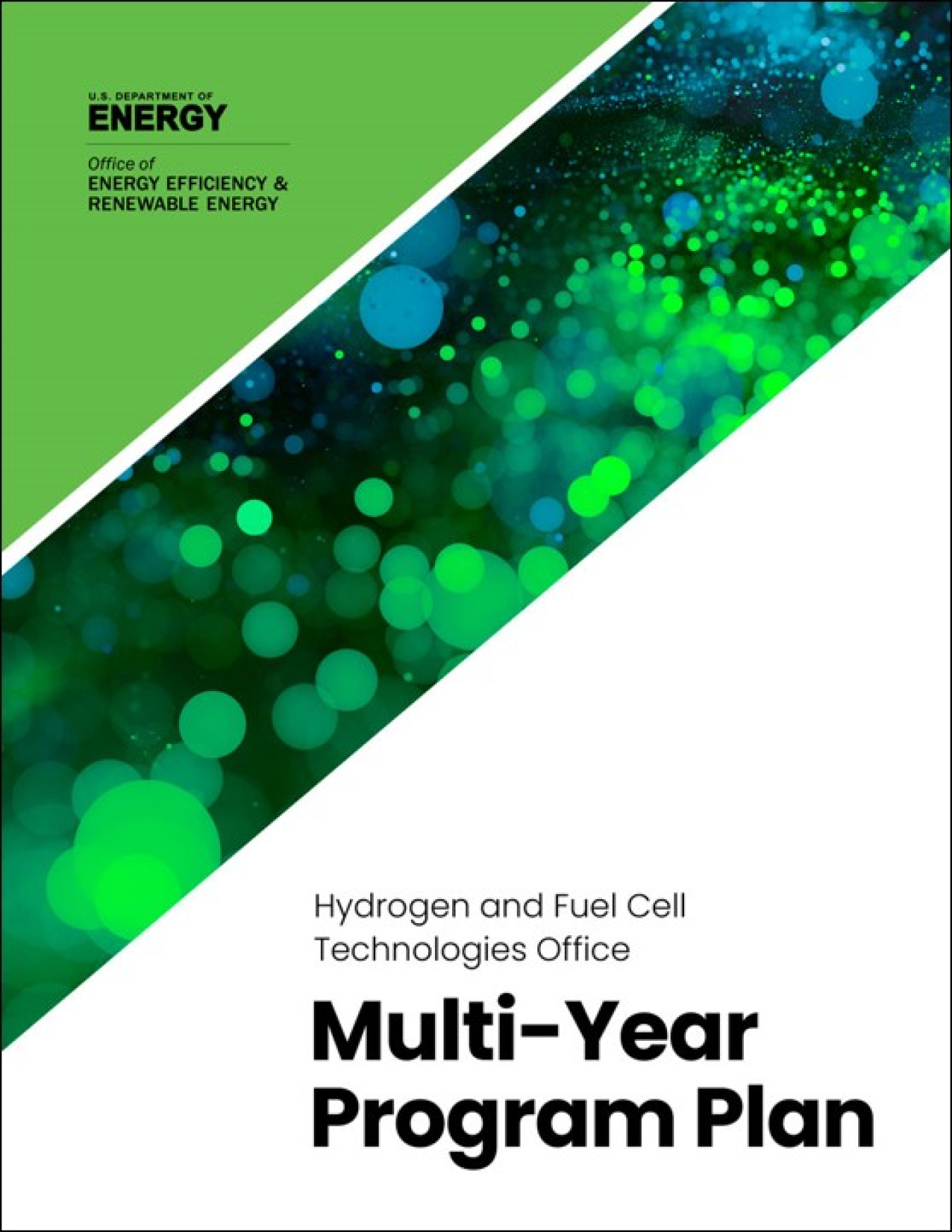HFTO Multi-Year Program Plan
The Multi-Year Program Plan (MYPP) sets forth the Hydrogen and Fuel Cell Technologies Office's (HFTO's) mission, goals, and strategic approach relative to broader clean energy priorities of the U.S. Department of Energy (DOE). Aligned with the priorities in the U.S. National Clean Hydrogen Strategy and Roadmap, the MYPP identifies the challenges that must be overcome to realize the full potential of clean hydrogen and fuel cells and explains how HFTO's research, development, and demonstration (RD&D) activities will help to overcome those challenges in the near-, mid-, and longer-term.
The MYPP is organized as follows.
- Executive Summary
- Introduction and Program Implementation
- Hydrogen Production
- Hydrogen Infrastructure
- Fuel Cell Technologies
- Systems Development and Integration
- Systems Analysis
- Safety, Codes and Standards
The MYPP serves as an operational guide and a valuable resource to communicate HFTO's priorities and RD&D activities to stakeholders and the public. It provides an overview of HFTO's priority areas—and relevant pathways—for RD&D critical to advancing and de-risking technologies primed to accelerate the emergence of the clean hydrogen economy.
Specific targets outlined in the MYPP include the following examples:
- Clean hydrogen production cost of $2 per kilogram by 2026 and $1 per kilogram by 2031.
- Electrolyzer system cost of $250 per kilowatt (low-temperature electrolyzers) and $500 per kilowatt (high-temperature electrolyzers) by 2026.
- Dispensed hydrogen cost for heavy-duty vehicles of $7 per kilogram by 2028.
- Fuel cell system cost for heavy-duty transportation of $80 per kilowatt by 2030.
The following sections summarize the technical areas covered in the MYPP and include links to the most up-to-date technical targets and resources for these technologies.
Hydrogen Production focuses on materials, component, and system-level RD&D to enable affordable production of hydrogen from diverse renewable domestic resources.
Download the Hydrogen Production section.
Hydrogen Infrastructure focuses on materials, component, and system-level RD&D to advance affordable and accessible delivery and storage infrastructure options.
Download the Hydrogen Infrastructure section.
Technical targets and resources:
Fuel Cell Technologies focuses on materials, component, and system-level RD&D for various fuel cell technologies to enable highly efficient conversion of clean hydrogen for end uses such as transportation and backup power generation.
Download the Fuel Cell Technologies section.
Technical targets and resources:
- Technical Targets for Hydrogen-Fueled Long-Haul Tractor-Trailer Trucks
- Fuel Cell Bus Targets
- Heavy-Duty Fuel Cell System Cost 2022
- Reversible Fuel Cell Targets
- MEA Target (Million Mile Fuel Cell Truck Consortium)
- Fuel Cell Manufacturing Targets
- Fuel Cell Technologies Program Overview 2023
- Anion Exchange Membrane Fuel Cell Targets
- Bipolar Plate Targets (FOA 2021, Subtopic 1A, Pages 10-12)
- Air Compression System Targets (FOA 2021, Subtopic 1B, Pages 14-17)
- Membranes for Heavy-Duty Applications (FOA 2020, Subtopic 3A, Pages 15-18)
- Manufacturing and Recycling Targets (BIL FOA 2023, AOI 2, Pages 38-65)
Systems Development and Integration focuses on the development and integration of complete hydrogen systems to enable novel demonstrations of energy systems deploying clean hydrogen and fuel cell technologies in hard-to-decarbonize sectors.
Download the Systems Development and Integration section.
Technical targets and resources:
Systems Analysis encompasses cross-cutting topics including data, modeling, and analysis that guides RD&D, and identifies priority markets for clean hydrogen technologies with impacts assessments.
Download the Systems Analysis section.
Technical targets and resources:
Safety, Codes and Standards encompasses crosscutting topics, including RD&D that informs safe design and operation of clean hydrogen technologies while addressing regulatory and permitting challenges.
Download the Safety, Codes and Standards section.
Technical targets and resources:


